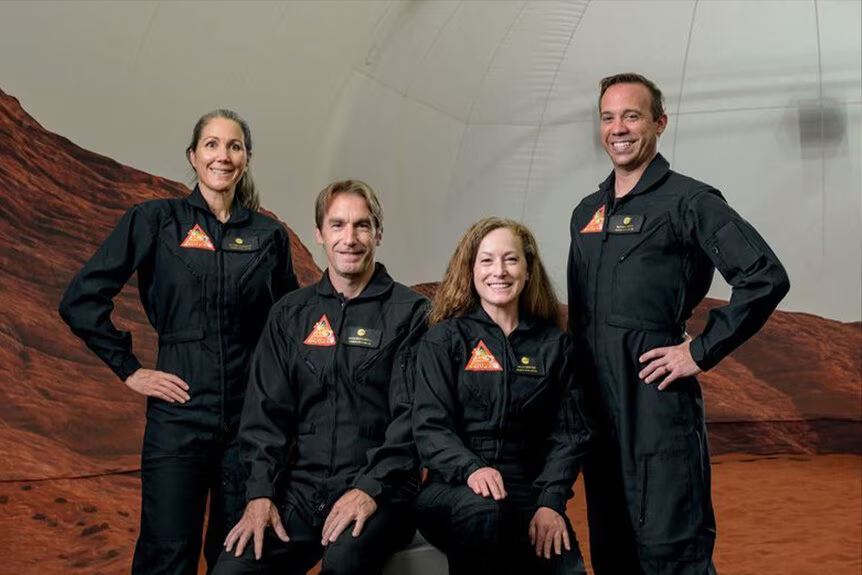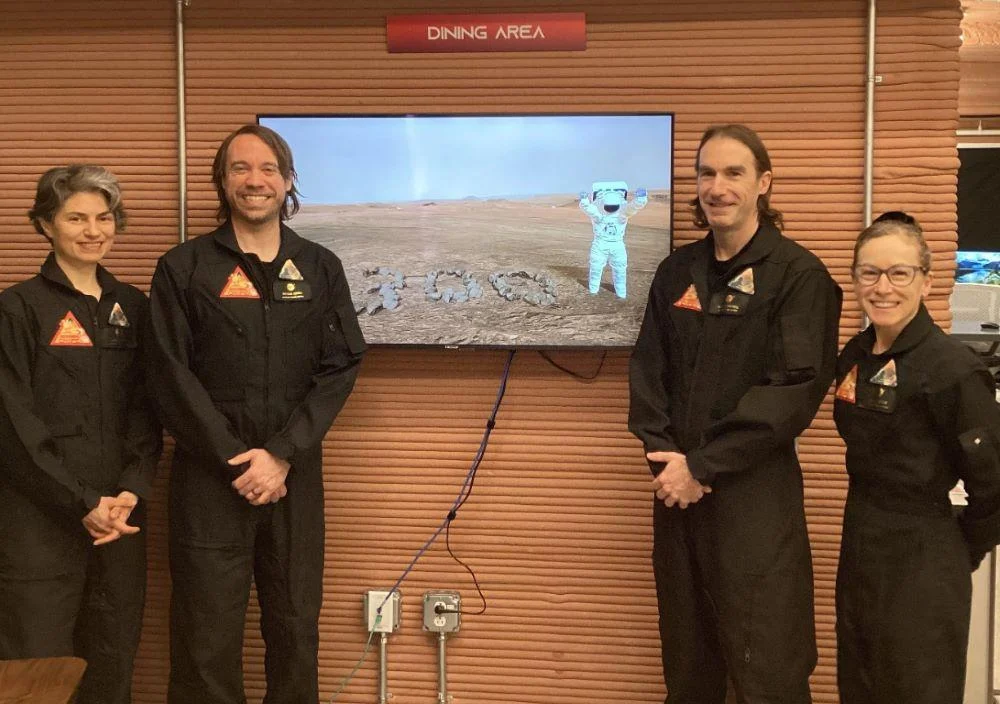For over a year, four crew members lived and worked in a simulated Mars environment as part of NASA’s Mars Dune Alpha mission. This mission, the first of three planned by NASA’s Crew Health and Performance Exploration Analog (CHAPEA), lasted 378 days and started on June 25, 2023.
The crew members—Kelly Haston, Anca Selariu, Ross Brockwell, and Nathan Jones—were greeted with applause when they came out of their 1,700-square-foot, 3D-printed habitat at the Johnson Space Center in Houston, Texas.
The CHAPEA program was created to study how people would cope with the conditions of a long mission to Mars. NASA hopes to send astronauts to Mars as early as the 2030s. Stephen Koerner, a NASA official, emphasized that the successful completion of this mission is a key step towards achieving that goal.
During their mission, the crew performed tasks like simulated spacewalks, robotic operations, maintaining the habitat, exercising, and growing crops. They communicated with mission control and their families with a delay of up to 22 minutes, mimicking the time it would take for messages to travel between Mars and Earth. Their food was limited to prepackaged items and crops they could grow themselves.

The Mars Dune Alpha habitat provided everything the crew needed, including separate sleeping areas, a bathroom, a kitchen, a living room, and spaces for fitness and laundry. The cropping system inside allowed them to grow leafy greens, herbs, and small fruits, similar to indoor gardening systems.
Crew member Ross Brockwell highlighted the importance of living sustainably, using resources wisely, and managing waste efficiently.
Suzanne Bell, who leads NASA’s Behavioral Health and Performance Laboratory, explained that these missions help NASA learn how to best support astronauts on Mars. The next CHAPEA mission is planned for spring 2025, with a third one expected in 2026. These missions are designed to gather information on how different crews handle the challenges of living in a Mars-like environment.
Volunteers for the CHAPEA program must meet specific criteria, such as being healthy, nonsmoking U.S. citizens or permanent residents between 30 and 55 years old, with relevant qualifications or experience. Crew member Anca Selariu reflected on the mission’s end, stating that exploring Mars unites people and drives human progress into the future.

